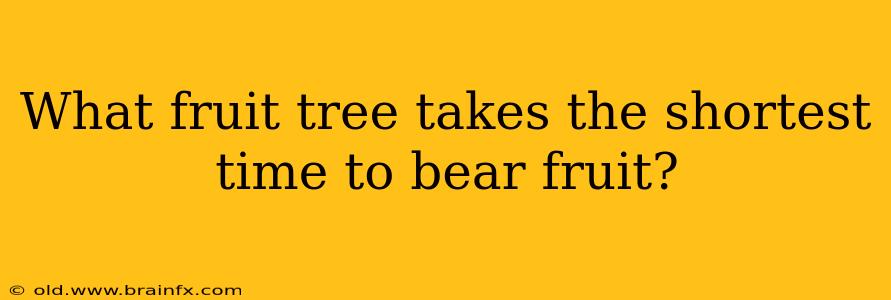Want a quick reward for your gardening efforts? Choosing a fruit tree that bears fruit quickly can be incredibly satisfying. While the exact timeframe depends on factors like variety, climate, and care, some fruit trees significantly outperform others in speed to harvest. Let's explore some of the fastest-fruiting options and the nuances that impact their productivity.
Top Contenders for Fastest Fruiting:
Several fruit trees are known for their relatively rapid transition from sapling to fruit-bearing. These include:
1. Dwarf Fruit Trees:
Why they're fast: Dwarfing rootstocks significantly reduce the tree's size, leading to faster maturity. Because the tree doesn't need to expend energy on extensive growth, it can focus on fruit production sooner. This applies to various fruit types, including apples, pears, peaches, and plums.
Considerations: Dwarf trees often require more frequent pruning and may need support stakes to prevent them from toppling over under the weight of fruit. Their shorter lifespan is also a factor to consider.
2. Figs (Ficus carica):
Why they're fast: Figs are renowned for their rapid fruiting capabilities. Depending on the variety and climate, some fig trees can bear fruit within their first year after planting, particularly when grown from cuttings.
Considerations: Figs thrive in warm climates and require well-drained soil. They may need protection from frost in colder regions.
3. Blueberry Bushes (Vaccinium):
While technically bushes, not trees, blueberries are worth mentioning.
Why they're fast: Blueberry bushes often start producing a decent yield within 2-3 years of planting. They offer a relatively quick return on investment compared to many other fruit-bearing plants.
Considerations: Blueberries need acidic soil and consistent moisture. Careful soil preparation is crucial for successful blueberry cultivation.
4. Certain Peach and Nectarine Varieties:
Why they're fast: Some peach and nectarine varieties, especially those grafted onto dwarf rootstock, can begin producing fruit within 2-3 years.
Considerations: Peaches and nectarines are relatively short-lived trees and are susceptible to various diseases and pests.
5. Raspberry and Blackberry Bushes (Again, bushes, not trees):
Similar to blueberries, these offer quick yields, often within their first or second year, depending on the variety and growing conditions.
Factors Affecting Fruiting Time:
Even within a fast-fruiting species, several factors can influence when you'll see your first harvest:
- Climate: Warmer climates generally lead to faster growth and fruiting.
- Soil conditions: Well-drained, nutrient-rich soil is crucial for optimal tree health and fruiting.
- Watering: Consistent watering is essential, especially during dry periods.
- Sunlight: Most fruit trees need at least 6-8 hours of direct sunlight daily.
- Pruning: Proper pruning encourages growth and fruit production.
- Pollination: Ensure adequate pollination for optimal fruit set. This may involve planting multiple varieties or attracting pollinating insects.
- Tree Health: A healthy tree is a productive tree. Protecting against pests and diseases is vital.
Choosing the Right Tree for You:
When selecting a fast-fruiting tree, consider your climate, soil type, and available space. Research specific varieties within each species to find one well-suited to your conditions. Consult local nurseries or agricultural extension offices for advice tailored to your region. They can offer valuable insights on the best options for your area and guide you toward success in your fast-fruiting endeavor.

